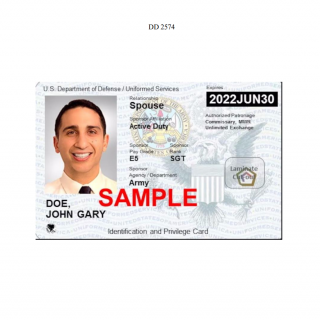DD Form 2574. Armed Forces Exchange Services Identification and Privilege Card
DD Form 2574 is the Armed Forces Exchange Services Identification and Privilege Card. This form is used by active duty military personnel, their dependents, and other authorized individuals to obtain identification and privileges at Armed Forces Exchange Services (AAFES) facilities.
The main purpose of the form is to provide proof of eligibility for AAFES privileges and to authorize access to AAFES facilities. The form includes sections for the applicant's personal information, their military status, and their relationship to the military member.
Important fields in the form include the applicant's name, date of birth, social security number, and military status. It is important to provide accurate and up-to-date information in these fields to ensure that the applicant is properly authorized to receive AAFES privileges.
The parties involved in the form are the applicant and the AAFES facility. The applicant is responsible for providing accurate information and ensuring that they are eligible for AAFES privileges. The AAFES facility is responsible for verifying the applicant's eligibility and issuing the identification card.
When writing the form, the applicant will need to provide personal information, military status, and relationship to the military member. In addition, they may need to attach supporting documentation, such as a military ID card or a dependent ID card.
Application examples of the form include obtaining access to AAFES facilities, such as military exchanges and commissaries. The form is necessary to ensure that only authorized individuals are able to access these facilities and receive the benefits of AAFES privileges.
Strengths of the form include its ability to verify the eligibility of applicants and to ensure that only authorized individuals are able to access AAFES facilities. Weaknesses of the form include the potential for errors or inaccuracies if the applicant does not provide accurate information or if the supporting documentation is not properly reviewed.
Opportunities for improvement could include the implementation of online application systems that can help to streamline the process and reduce errors. Threats to the form include the potential for fraud or misuse if the applicant provides false information or if the AAFES facility does not properly verify eligibility.
Related forms include the Department of Defense Identification Card and the Uniformed Services ID Card, which are used for similar purposes but have different requirements and procedures. The main difference between these forms is the level of access and privileges that they provide.
The form affects the future of the participants by providing access to AAFES facilities and the benefits of AAFES privileges. Properly verifying eligibility and issuing identification cards can help to ensure that only authorized individuals are able to access these facilities and receive the benefits that they provide.
The form is typically submitted to the AAFES facility where the applicant wishes to receive privileges. Once the identification card is issued, it is stored in accordance with applicable laws and regulations.

